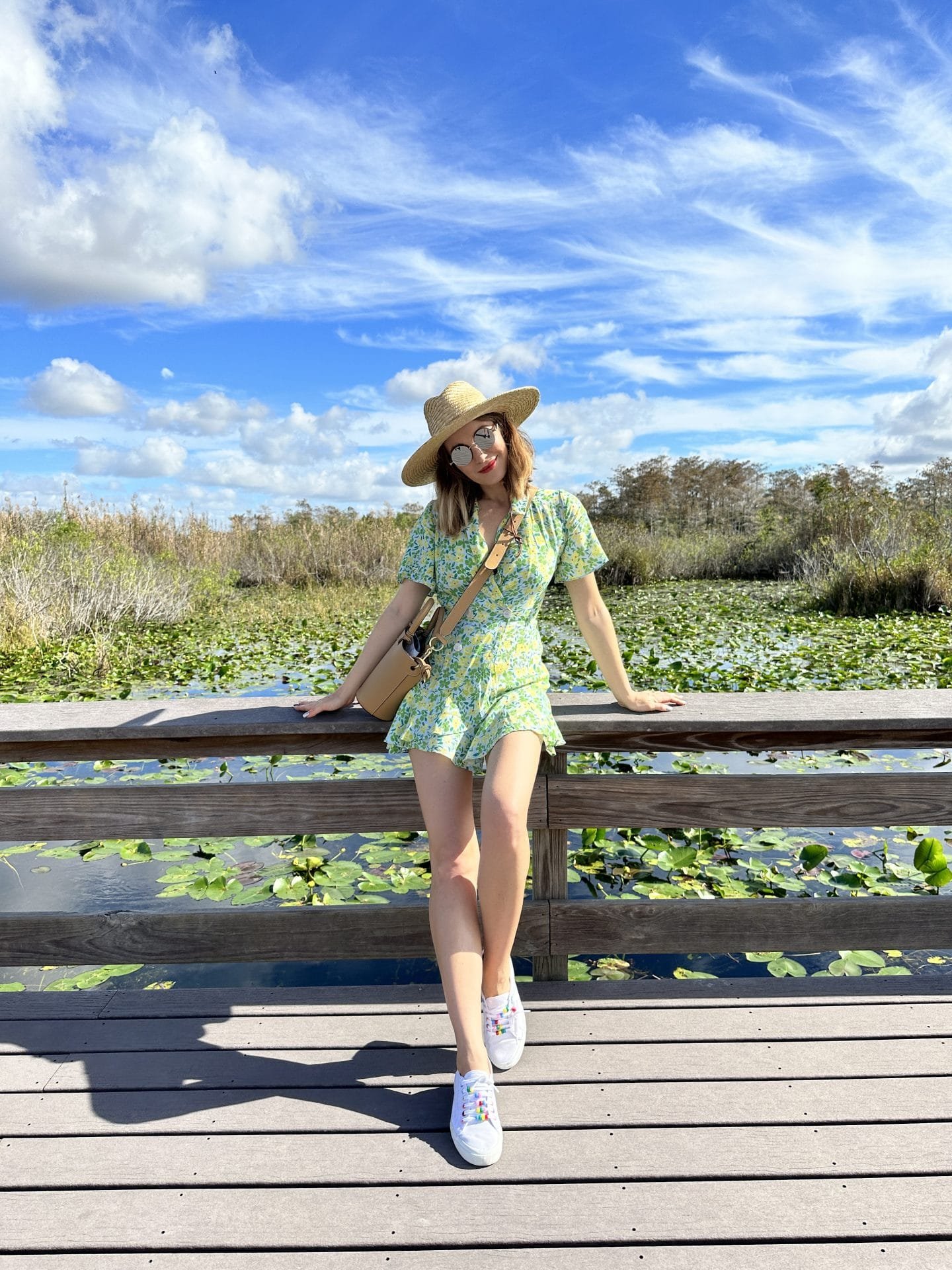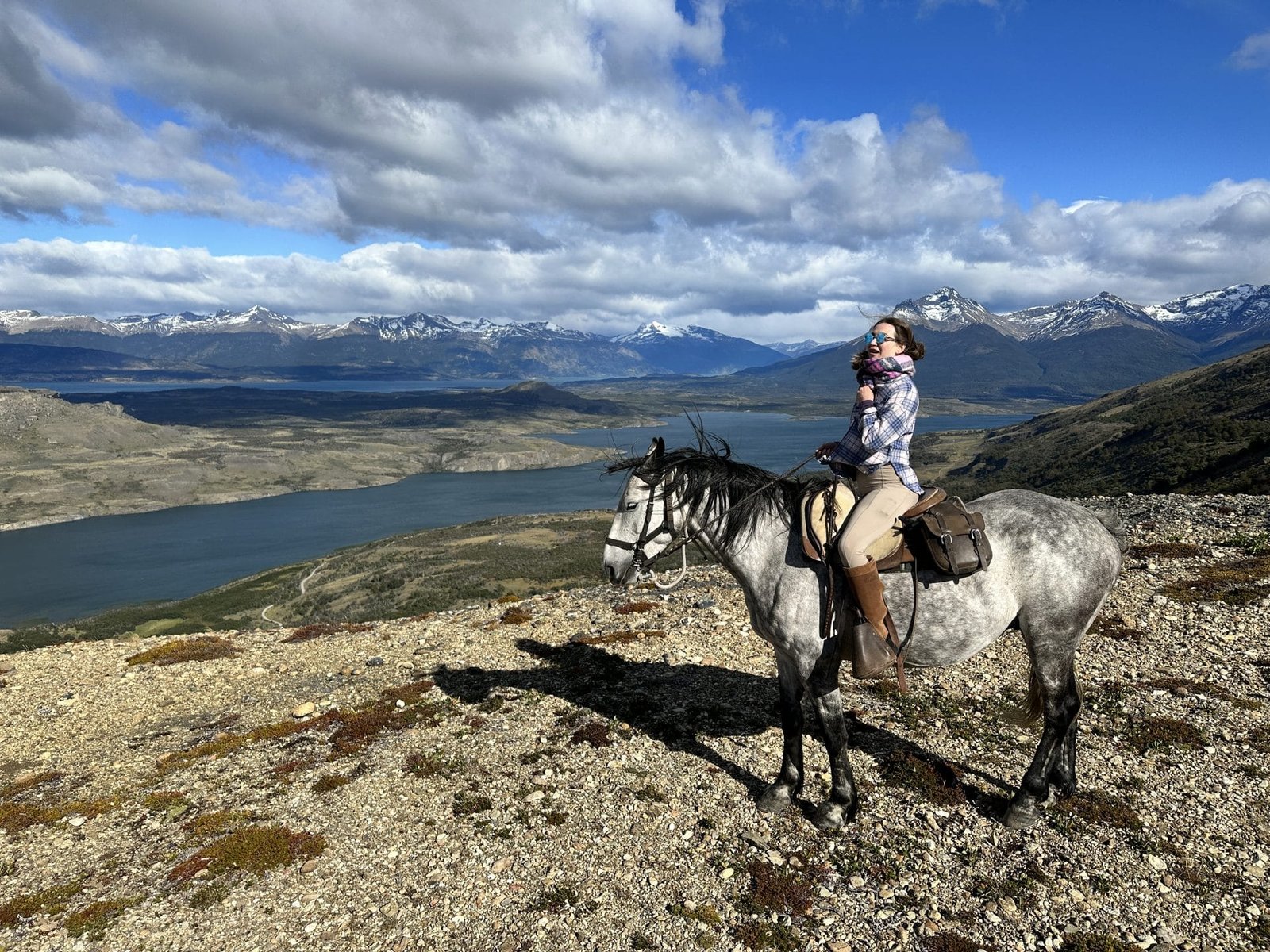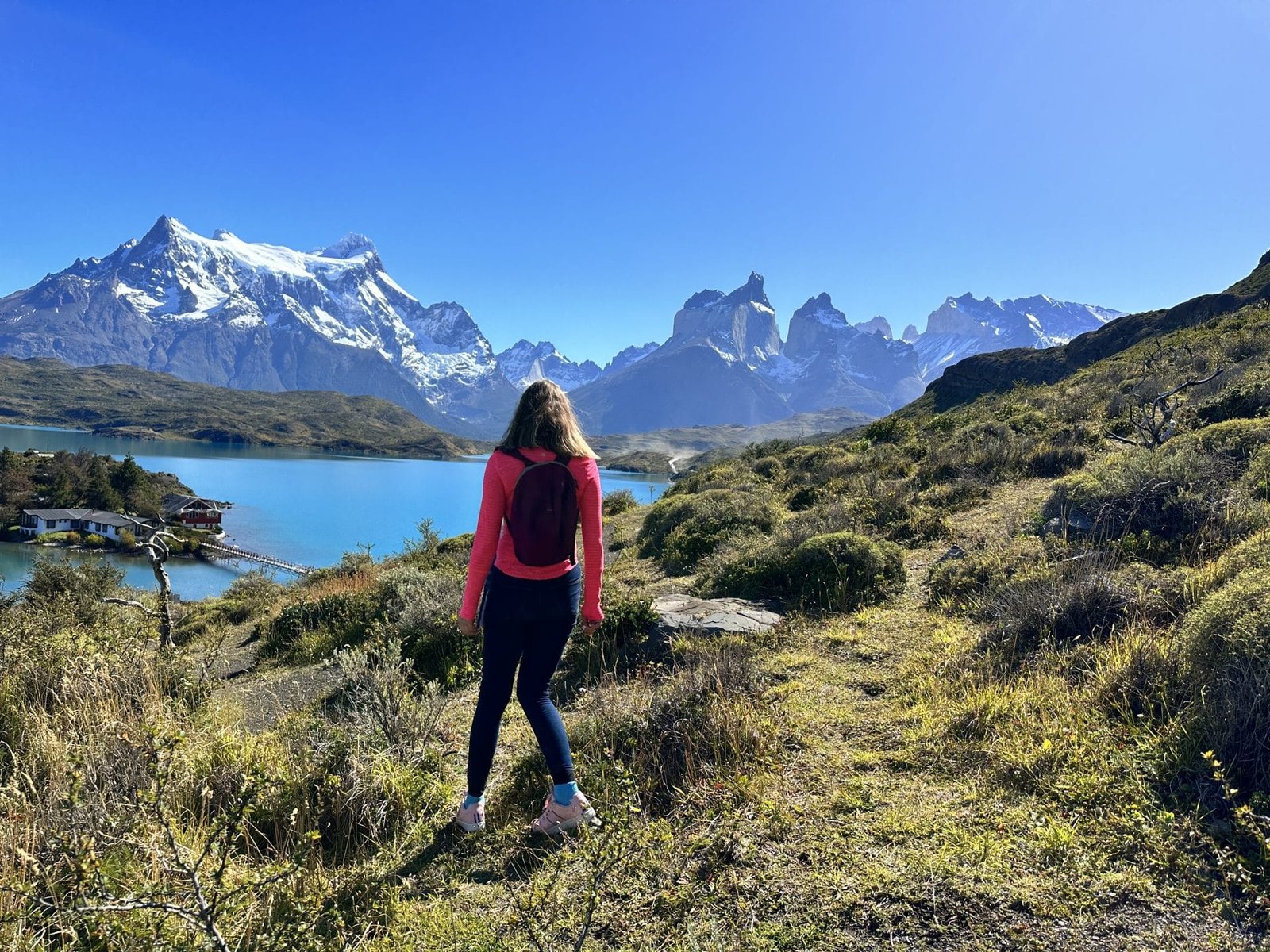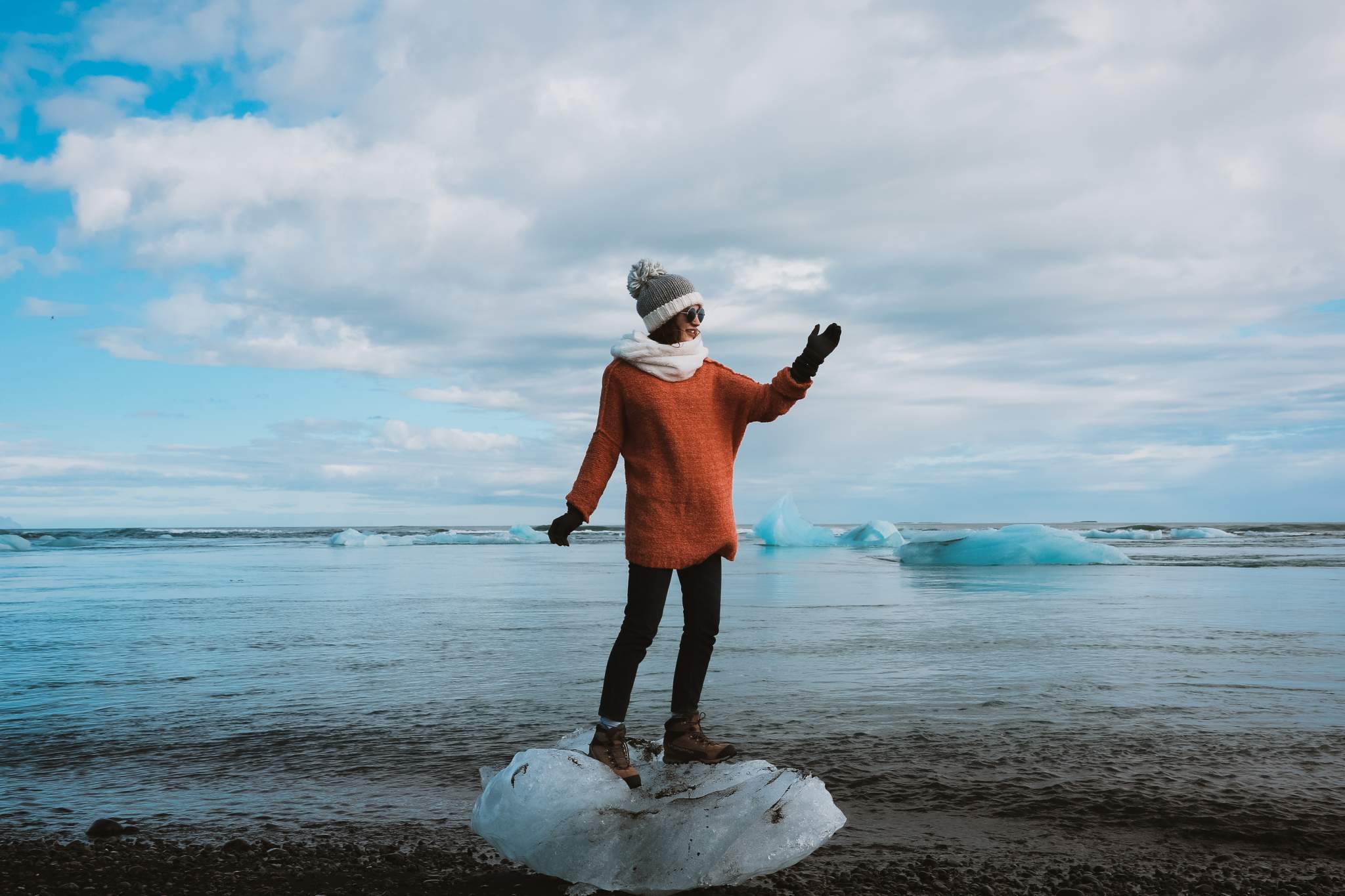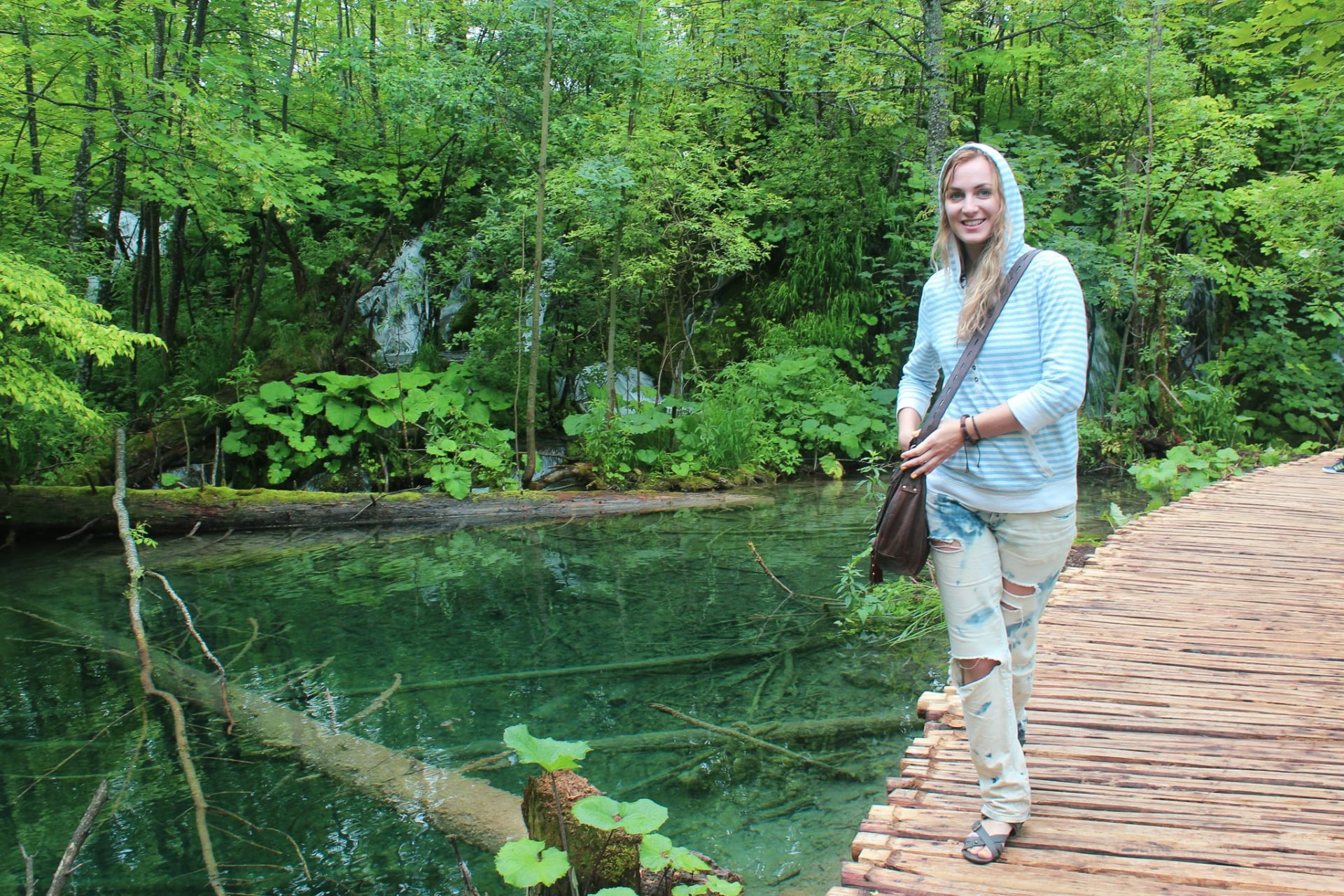
The Complete Guide to Plitvice Lakes National Park, Croatia
Plitvice Lakes i(pronounced PLEET-veet-say) is the most enchanting and accessible natural wonder.
All legends seem to be a reality when you find yourself on the Plitvice Lakes, the place of unearthly beauty and enchanting power.
How to visit Plitvice Lakes National Park: Practical Guide
What is Plitvice Lakes National Park in Croatia ?
Plitvice Lakes National Park is a cascade of 16 large and many small lakes!
They are divided into Upper and Lower Lakes. Besides, the reserve has more than 90 waterfalls and 20 caves.
The formation of unique landscapes was facilitated by the Koran River, which passed through limestone, creating barriers that formed dams. They developed a series of lakes, which are interconnected by a chain of waterfalls.
There are sixteen lakes, each connected to the next by a dramatic waterfall.
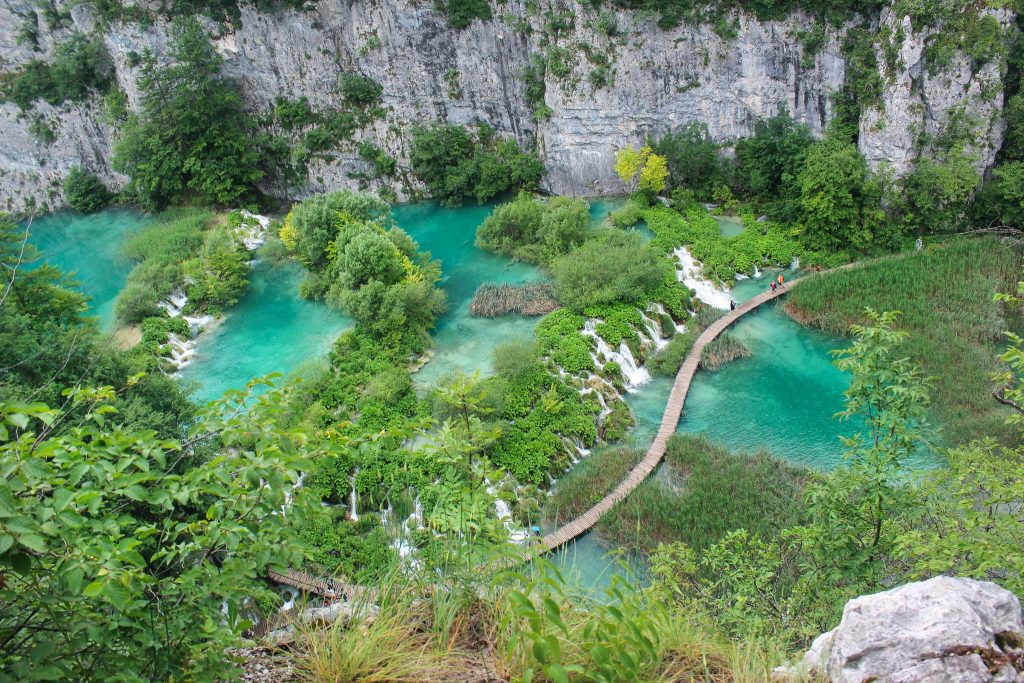
In the 90s, a war broke out between the Croatian government and the rebel Serbs. The Serbs managed to defend this area, and until 1995 it remained independent. During the war, the Park’s entire territory was mined. It was not the Park itself that was important to the Serbs, but only the road connecting the 2 Serbian communities. Already in 1995, the Croats again conquered Plitvice Lakes.
Glorious natural beauty of Plitvice Lakes
The first thing that comes to mind when you get to the Park is that the Lakes are the greatest example of green heaven, untouched in its full glorious natural beauty. Unlike Krka National park, you can’t swim in any of the lakes.
The variety of flora and fauna is incredible and will leave the most seasoned naturalist speechless. It remained untouched due to its remote location and being on the UNESCO World Heritage List. To preserve the unique nature of the Park, swimming in the lakes is strictly prohibited.
So are picnics and pets.
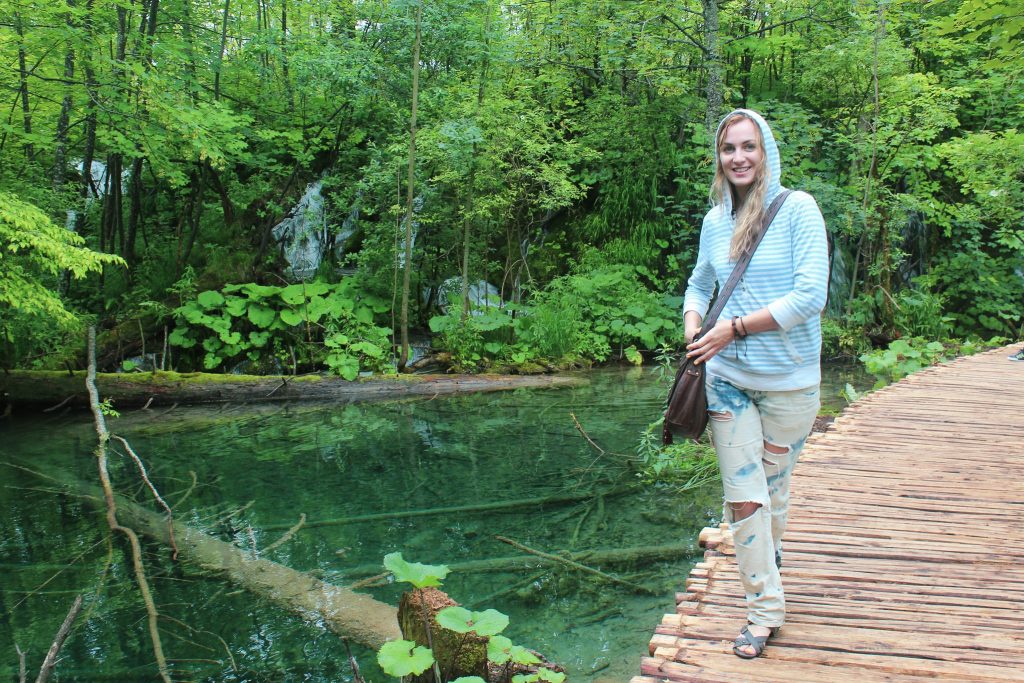
More than 75 species of endemic plants that can’t be found anywhere else have been preserved due to the lack of pollution and any kind of human touch.
The Park and the purity f it strongly reminds me of Monteverde Cloud forest in Costa Rica.Wild animals live in the forest: brown bears, bobcats and wolves.
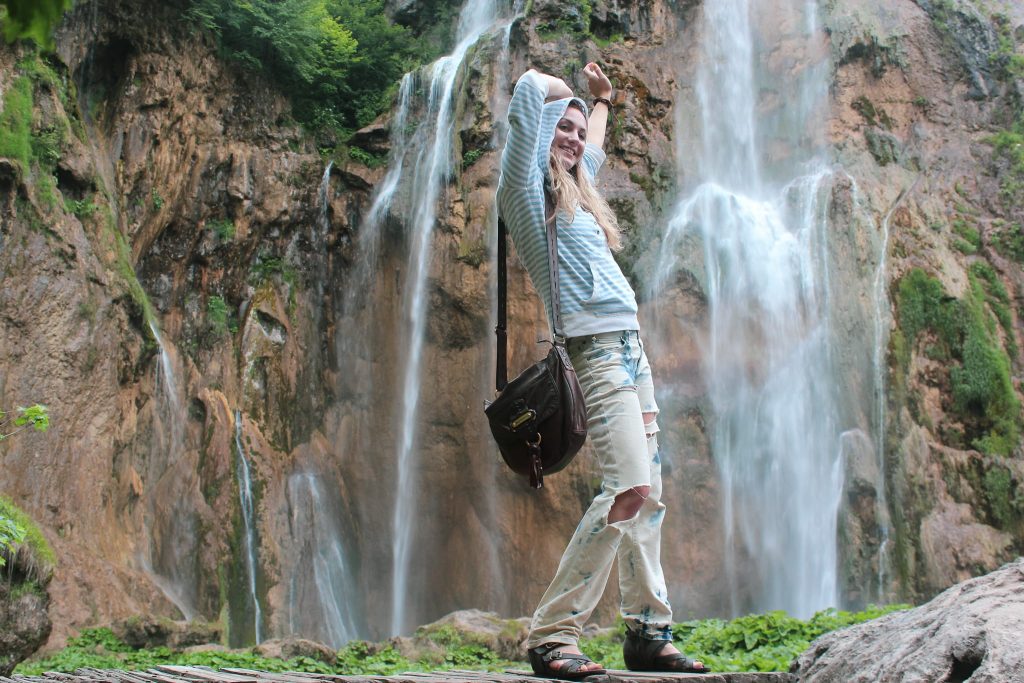
Plitvice Lakes National Park history and practical tips for visiting
The noise from the gurgling water from small splashes and massive cascading waterfalls, the birds singing, frogs croaking will accompany you anywhere you go. There is no avoiding getting wet. The green-green plants surrounding the lakes are direct proof of this. They are evidence of the extraordinary vitality inherent in this place.
Plitvice Lakes is also known for the ever-changing watercolor: from green to light gray and even pale blue. The particular uniqueness of this reserve is its naturalness. In clear water, you will see fallen trees and even sunken boats. These drowned trees are the reason the new dams and cascades of lakes arise over time.
Plitvice Lakes is a giant travertine factory
Roman Colosseum has been standing for many centuries. Did you know that it is built from travertine blocks? Yellowstone has similar formations.
Travertine formation depends on the particular moss growth. Some moss can actually form whole travertine caves!
What’s the secret of this purity and surreal nature? Plitvice Lakes is located in a unique condition or several conditions: water composition, vegetation, temperature, etc. Under the influence of all these factors, calcium carbonate is formed in water.
Travertine, contrary to the limestone, grows with time-lapse velocity; the park is literally alive.
This biodynamic process has built phenomenal waterfall blocks between each lake. These barriers can grow up to three centimeters a year!
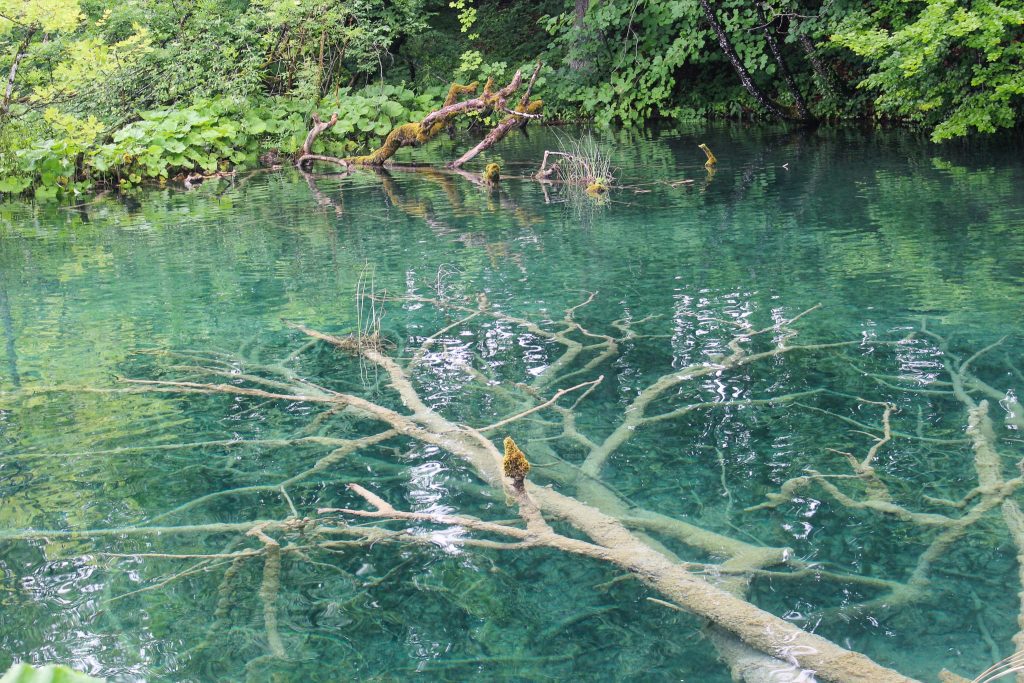
Once calcium carbonate is released in water and then falls like flakes to the bottom of lakes and to any objects that have fallen into the water. Then the new cascades of lakes and pristine waterfalls appear. It goes on and on. This process has not stopped for hundreds of years.
This is also the reason why the rangers of Plitvice National Park do not remove fallen trees and branches from the bottom of the lakes: they don’t want to prevent the formation of travertine. In the end, this is what makes Plitvice Lakes so unique and mysterious – it has nothing in common with well-groomed European parks and sometimes even looks like wild jungles.
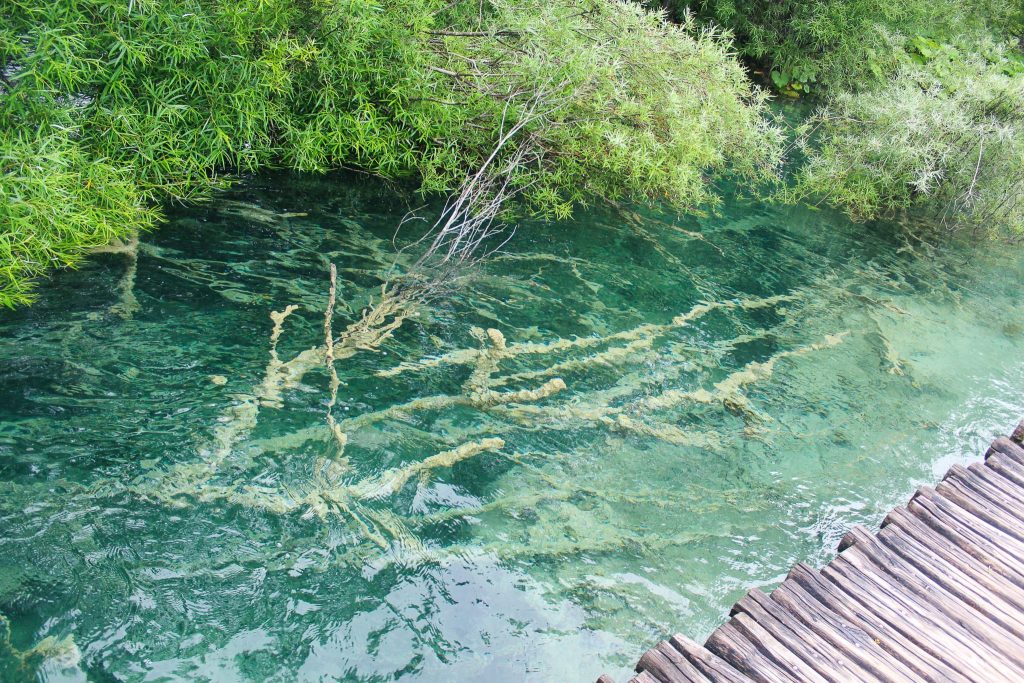
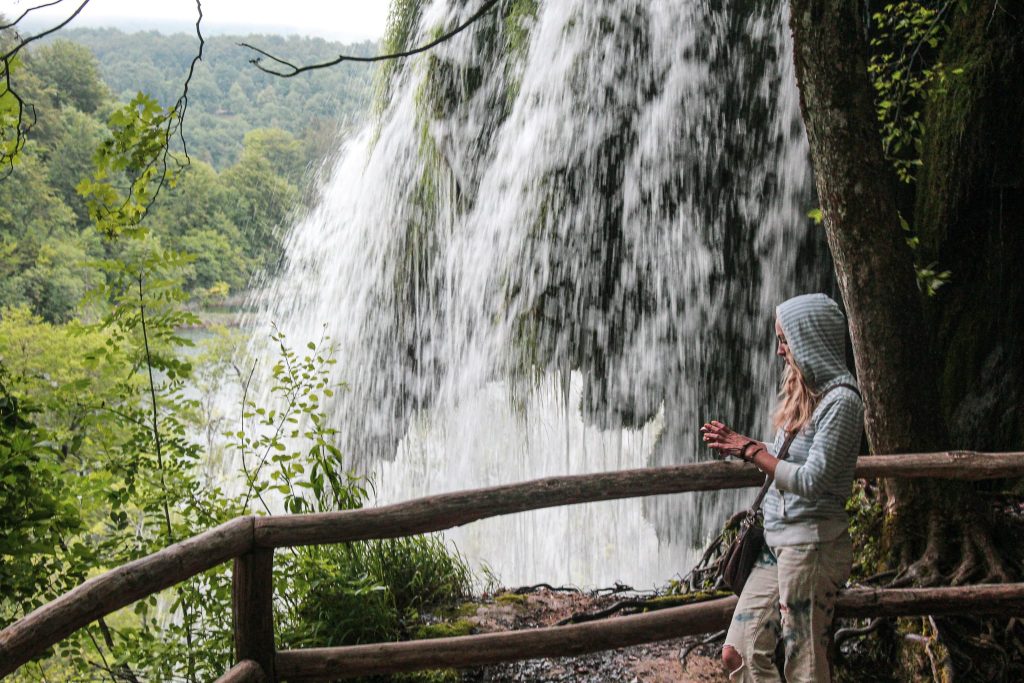
As calcium carbonate grows overtime on ledges, trees – limestone walls rise higher. This is similar to how dirt sits on a porous sponge. Travertine is a porous and durable limestone material.
Limestone factory
There are many limestone rocks both in Russia and in Europe. But only here, the Plitvice Lakes possesses the perfect conditions for limestone formation.
1- the water should be absolutely pure
2-moss plays a crucial role in travertine formation and Plitvice lakes have plenty of it
3-the temperature is very important; some 2 thousand years ago, lakes were not yet formed: it was too cold.
Nature grows travertine skillfully but gradually.
Look for the moss !
Watch the moss when you are in the Park. If you look closely, you will notice young bright green bushes of fresh moss, very soft to the touch. Some moss is yellow – it’s pricky and hard to the touch; that means that travertine already began to form on the yellow moss.
See how dense moss grows at each waterfall.
Plitvice Lakes park covers a total of 300km, only 1% of which is accessible for tourists to explore. The rest is occupied by solid vegetation.
How to navigate Plitvice Lakes park
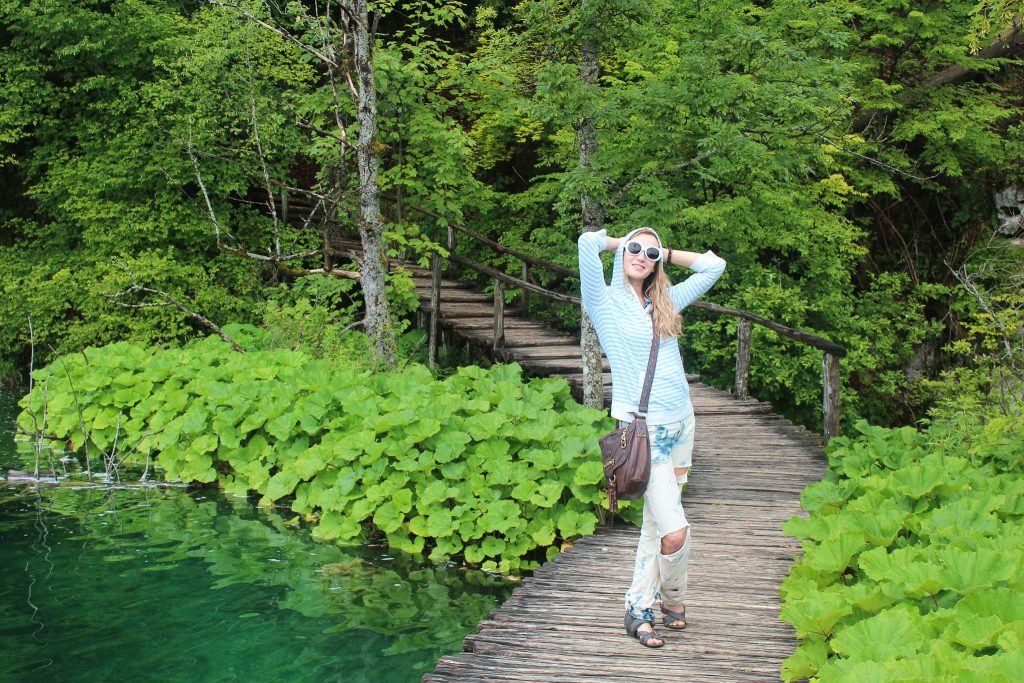
There is a great network of wooden boardwalks conveniently built to lead visitors through a stunning ecosystem.
The trails are built very conveniently, and there are kilometers and kilometers of them. You can hike and feel one on one with the unimaginable nature of the Park even though it hosts hundreds of visitors daily.
The minefield
The unique landscapes of the National Park were not always available for visiting. In fact, the Park was completely closed because of mining during the war.
Don’t worry, today the Plitvice Lakes area is absolutely safe, but walking outside the laid routes is not recommended.
Routes
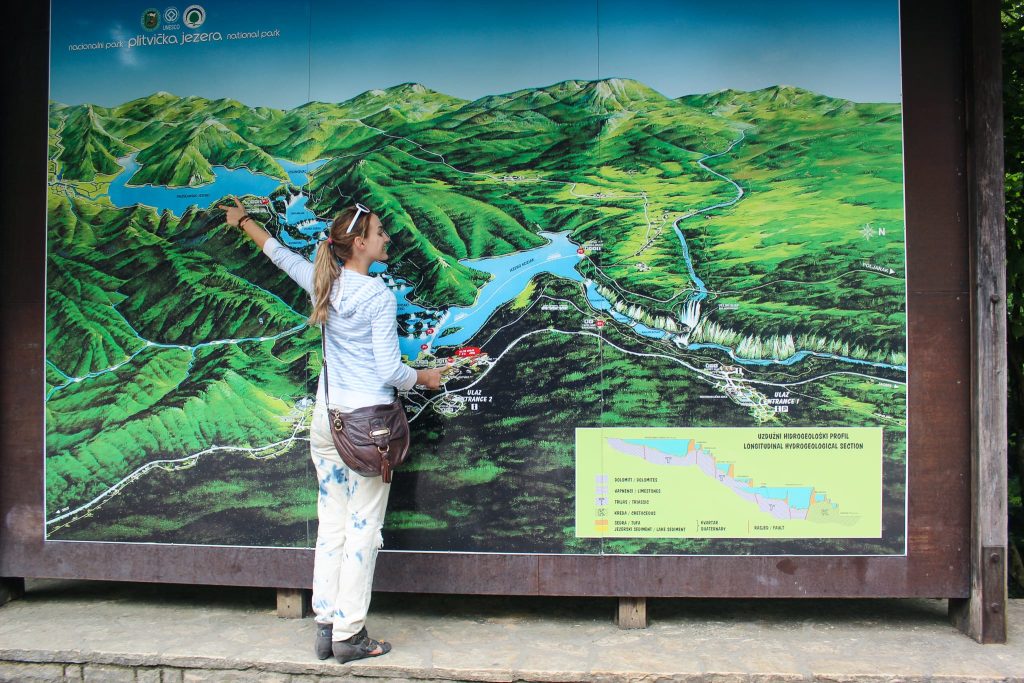
This is the trip where a spontaneous approach will not work out very well. Plan your route in advance. There is an app that helps you navigate the reserve – and a total of 4 routes. It is super easy to follow the route as there are precise signs , benches for breaks, bathrooms, and pretty decent hiking conditions.
There are also stands with the routes from entrance No. 1 are marked in green and from entrance No. 2 in orange.
Which route to chose for your Plitvice Lakes visit
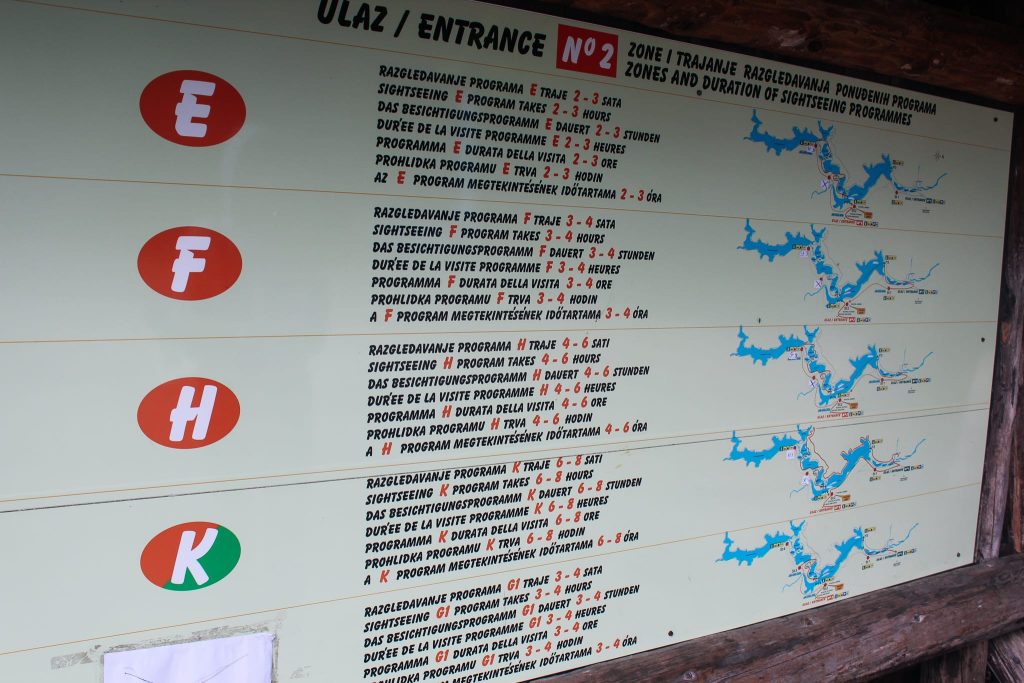
Route A
The shortest is the two-hour route A; its length is 3.5 km. It is also the most popular and crowded.
If time and your physical health allow, the medium difficulty route is a great choice – you can truly get to know the reserve and see everything it has to offer. It is a combo of hiking, boat transportation and a train.
Taking a boat is a must, I must add.
Route E
Route E is perfect for a brief visit. It is packed with beautiful sights. Basically all you can see and in just two hours. And if you have 4 hours, you can still take a ferry to the lower lakes and get the jaw-dropping moments looking at the whole system of waterfalls from the top.
Route E is perfect for a brief visit. It is packed with beautiful sights. Basically all you can see and in just two hours. And if you have 4 hours, you can still take a ferry to the lower lakes and get the jaw-dropping moments looking at the whole system of waterfalls from the top.
Route K
The longest and most difficult route is K. It is hiking only – no boat, golf cart or train to give you a lift, and the length of the route is more than 18 km. This route is better to stretch for two days. This hike will take you directly through the forest trails and mountainous areas. Hiking boots and decent physical shape are obligatory.
But, there are no routes that require you to be in a perfect physical – pro athlete shape. Some just require a little bit more effort. Good shoes can do miracles; mark my word.
Generally, you will be walking through a series of perfectly built wooden walkways, there is a huge network of those, and they blend perfectly with the natural landscape of the Park.
These constructions allow you to get as close to the water and waterfalls as possible and even if you’re not a pro photographer, your photos will be perfect. Just clean your camera/phone lens and the natural beauty of the park will do the rest.
Plitvice National Park entrances
There are three entrances to the reserve: entrance No. 1, entrance No. 2 (there are usually fewer lines), and a backup entrance is Flora.
Visitors who bought tickets in advance should pick up tickets at entrance number 2. But, if the tickets are on hand, you can go through any entrance.
Entrances 1 and 2 are the most popular: the first is in the Lower Lakes region, and the second is near the Upper Lakes.
Entrance number 3
Backup entrance Flora is located within walking distance from the village of Plitvice Selo.
If you plan to visit both the Upper and Lower Lakes, any entrance will work. Most visitors and guides recommend starting from the top and going down to the lower lakes.
Where and how to buy a ticket?
You don’t need a guide to visit the Park. You can buy your ticket upon arrival or in advance, which is super convenient and recommended( at least one day in advance). The unbelievable crowds in the peak season are a huge inconvenience, and the park administration has introduced a ticket sales system with certain hours of visits.
You can buy a ticket at the box office of the reserve standing in line. Be sure to check the number of free tickets in real-time on the park website. The number of tickets for a particular visit time may be limited.
If you purchased your ticked online upon arrival, you need to activate it at the entrance.
The best time to go to Plitvice Lakes
The Park is always busy. Even if you go in the offseason, there will be crowds of visitors. Imagine what’s going on in the Park in the peak season?!
The only way to avoid the crowds is to start your hike in the early morning to go late in the evening. Midday is the busiest time. Statistics show that on any day, the quietest hours are hours after opening and a few hours before closing. Mostly because the buses are packed with tourists that arrive every hour starting at 10-11 am.
There is , of course, space for everyone, but who wants to stand in line to take a photo?
Bottom line: if you can start your adventure early , do so.
How to get there
How to get to Plitvice Lakes national park
By car
There is parking at entrances 1 and 2 for every type of transport, with the payment due upon departure. You don’t need to book anything in advance. The parking cost is around ten Kun or $2, depending on the season.
By bus
It’s a good idea to pick your route in advance since the entrances to the Park are located at a fairly remote distance from each other; it can be a great time saver.
There are entrances along the D1 road, and there are bus stops there, perfect for those who are traveling on public transport.
Buses run from almost all major cities of Croatia: Zagreb, Zadar, Split, Pula, Makarska (some with transfers).
The international Flixbus service will help you plan your trip, where you can buy a bus ticket online.
An independent trip to the Plitvice Lakes from the Zagreb bus station will take 2 hours, and the fare is about $10- $15
Croatia’s bust network is very developed. There is a regular direct connection from the following cities: Split, Zadar, Zagreb. From Split, the average price of a bus ticket to Plitvice Lakes will cost about 160 Kun, from Zadar 90-100 Kun.
Buses from Split run once an hour and even more frequently from Zadar. Tickets can be bought before your trip at the ticket office of the bus station, in advance.
There are no direct buses going to Plitvice from Istria (Pula, Rijeka and other cities)or vice versa, but you can still make it. All buses to Istria go through the bus station of Karlovac. Drive from Plitvice Lakes to Karlovac in just over an hour. The ticket price is about 80 Kuna.
By plane
There is a direct flight from Split that will bring you to Plitvice lakes in about 6 hours and will cost you $50.
How many days do you need to visit Plitvice Lakes?
I recommend spending at least one night in the area to fully absorb the natural beauty of Plitvice Lakes. So, if you can, plan at least two days for your park visit.
Yes, it will involve additional hotel costs but it is so worth it! There are so many trails to explore, with 16 lakes and more than 90 waterfalls – the Park is colossal. The lake system runs 22 km +additional 36 km leading to the Park.
Where to stay overnight?
There are plenty of stays for any taste and budget, from hostels and well-equipped campsites to hotels and private villas.
Try to stay as close to the entrance as possible , especially if you use public transport to get to the Park.This way, you can just walk to the Park, and visit several times a day.
Where to eat in Plitvice Lakes National Park
There are food “restaurants” at the entrances to the Park, with overprices and not so tasty fast food selection of fries, sandwiches and burgers. These will be your only food options. If you have a particular diet,you should stock up on snacks before you come to the Park. All major restaurants are located outside the Park.
Eco-friendly park transport
- There are several ways of moving around the Park
- walking, hiking
- electric bus
- boat
- trains
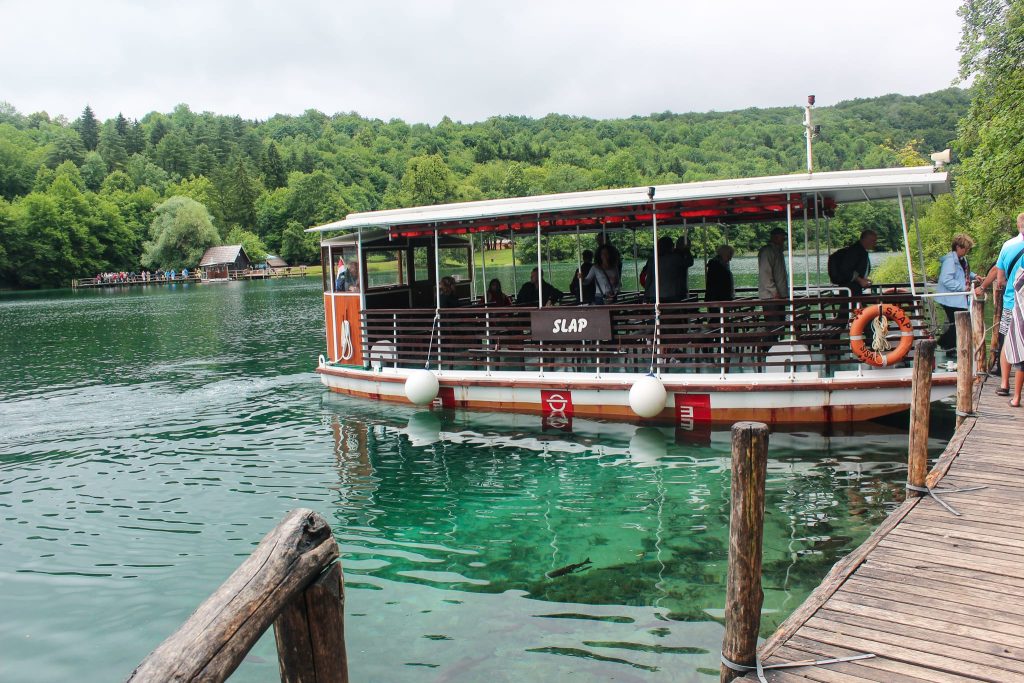
Electric buses and trains with panoramic windows (obligatory in my opinion) run between the Upper and Lower Lakes. Boats and ferries run through the largest Kozyak Lake. The boat trip is included in the price of admission to the park.
All vehicles in the Park are environmentally friendly.

